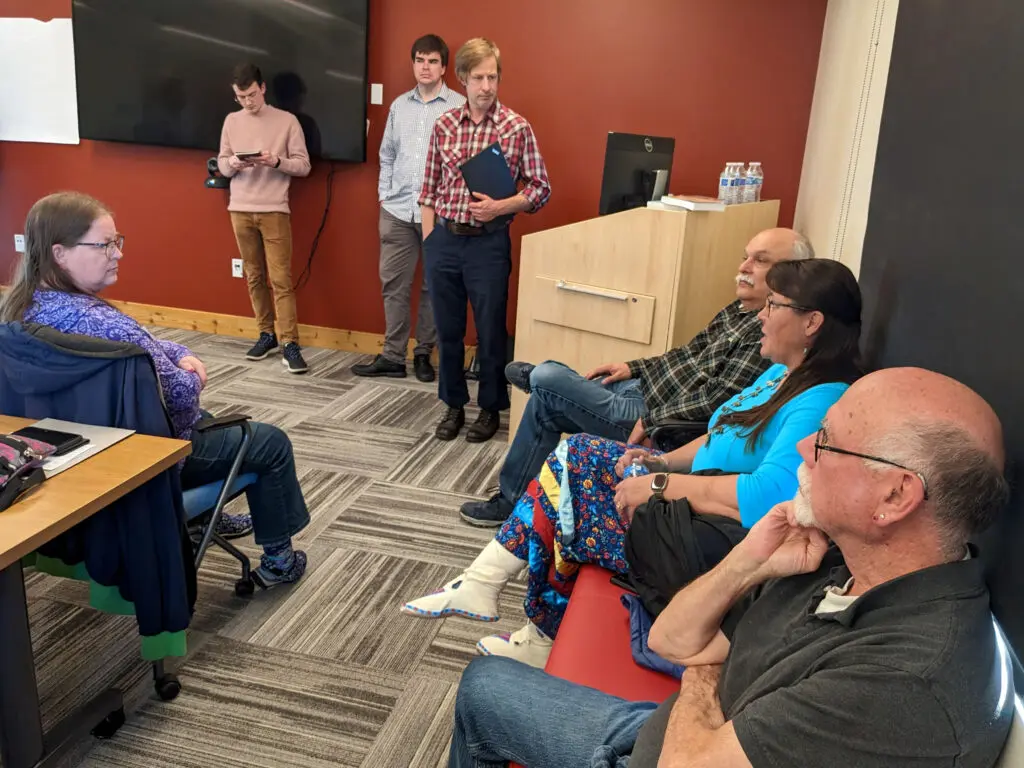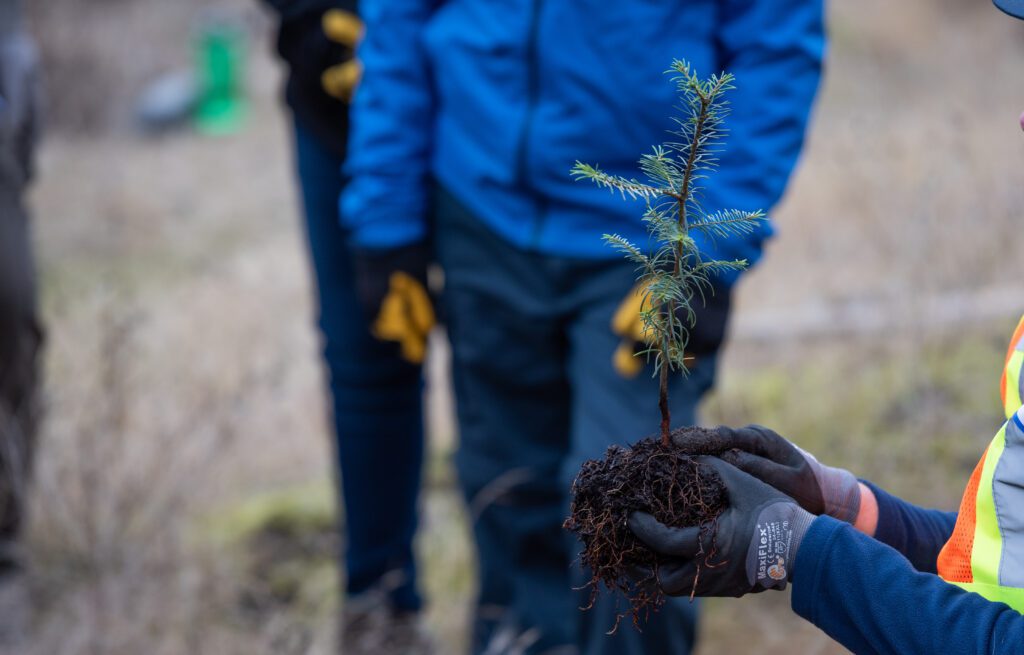Name: Himalayan and evergreen blackberry (Rubus armeniacus and Rubus lacinatus)
How it spreads: By berries, root fragments and stem sprouts
Difficulty to remove: 3 out of 10

With its tall, arching, sharply-thorned stems creating a dense thicket, this robust bully shades out the forest floor and the banks of rivers and streams.
If you’ve been anywhere in the Puget Sound region, you’ve likely seen one of our two most prevalent invasive blackberry species. And if you’ve tried to remove them, you probably have at least a few scratches to show for it. We often hear, “I’ve tried to remove that; it can’t be done!”
But with the right equipment and a little patience, getting rid of this tough invader doesn’t have to be a scarring experience.
Making a Monoculture
Like the other plants we’re exploring this week, Himalayan and evergreen blackberry are a problem because they don’t play well with others: their aggressive growth patterns create a monoculture, blocking out all other plants.
In our forests, the understory is smothered and no young saplings can grow up into the next generation of canopy trees. Along our rivers and streams, blackberry grows close to the bank and doesn’t provide the shade native fish species need to keep cool or support the native insects they eat.
Both species of invasive blackberry can be identified by their tall, tough, green or reddish-brown stems and long, stiff, slightly curved thorns. Their leaves are divided into leaflets clustered in groups of five. Himalayan blackberry leaflets are rounded while evergreen blackberry’s look like cut lace. Both plants have small, white flowers with five petals and large black berries.
Clearing the way
When you tackle blackberries, wear thick leather work gloves and tough clothes—long sleeves and pants (definitely don’t wear your favorite outfit—it will get torn up!). Removing a blackberry thicket is done in two parts:
- Cut the stems down
Begin by hacking away at the stems until short pieces fall to the ground. We recommend using long-handled loppers. Any live stems and berries should go into a compost pile or yard waste bin but the dead, gray-brown stems can be left to decompose on the ground. Leave a foot of stem sticking out of the ground (to remind you where the root is underground). - Getting to the root of it
Once the area is clear, come back with a long-handled shovel and dig the root out. Winter is a good time for digging, when the ground is wet and soft. Often there will be a large tangle of roots less than a foot underground. Try to cover up the bare soil you leave behind as quickly as possible so that you don’t create the perfect conditions for a new invasion. A very thick (6-8”) layer of wood-chip mulch is good to cover the ground with—it will eventually decompose and become good soil. On steep slopes, or sunny areas with very thick blackberry, a layer of burlap or cardboard under the wood chips may be necessary to stabilize the bare soil or block light.
Inevitably, root fragments left in the ground will re-sprout. Diligently pull them out at least once a year, and persistence will pay off.

But what about the berries??
Do you love eating them? And what the birds? You’re sure you’ve seen them eating those blackberries. Can they really be that bad?
We admit it, we like eating them too, but it turns out there are a lot of other berry-producing plants that cause a LOT less damage to our local ecosystems. Here are just a few of our favorites:
- Salmonberry
- Thimbleberry
- Huckleberry
- Trailing blackberry—our native Northwest blackberry, which grows delicately along the ground (true to its name) and doesn’t have the bad habits of its invasive counterparts

And don’t forget about the other native berries, not as tasty for us humans, but important food sources for birds and other wildlife:
- Snowberry
- Elderberry
- Oregon grape
- Black twinberry
- Woodland strawberry
- Serviceberry
- Red flowering currant
If you add in other native fruit (Indian plum, nootka rose, bitter cherry), as well as nuts (beaked hazelnut, Garry oak), and other ways that plants provide food for wildlife, you’ll have a list of just about all of our hundreds of native plants—all different, and all playing their own role in a dynamic, healthy environment. So although some birds will eat invasive blackberries if they are around, they happily feasted on many other things long before Himalayan and evergreen blackberry showed up.
We make sure to include these in the diverse array of native plants we select for our restoration sites. In addition to the fruit they produce, native plants help to re-establish a healthy functioning environment by preserving the natural hydrology, soils, canopy cover and other elements of good habitat for local wildlife.






